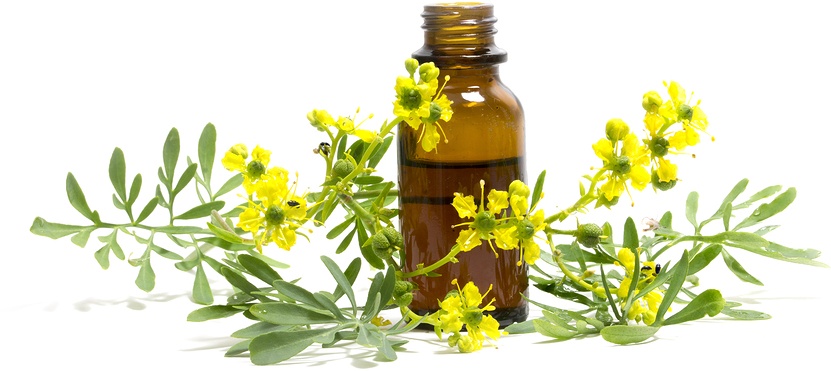Know Your Remedies – Ruta Graveolens (Ruta)
 Common Names: Rue; herb-of-grace.
Common Names: Rue; herb-of-grace.
General Information
Ruta Graveolens (Ruta) is useful for rheumatic and connective tissue problems, especially following chronic overuse, strain, or injury of joints or tendons. Small tendons of the eye may also be affected. The person complains of soreness and stiffness, sometimes of the whole body. Rising from a chair may be difficult and the affected joint can feel as though it will “give way”. Pain and stiffness is worsened by cold, damp weather, and lying on the affected part. Warmth and gentle movement eases them. Anxiety and panic attacks may be associated with chronic symptoms.
Eye Problems
- Eyestrain and headache from prolonged close work such as reading fine print or doing needlepoint.
- Stiffness, burning and redness of the eyes after overuse.
Joint and Bone Problems
- Weakness and stiffness (e.g. when rising from a chair).
- Sore and bruised pains worse during damp weather.
- Painful nodules following injury to the surface of bones covered by thin skin, such the shin.
- Ganglions, bursitis, and tendonitis.
- Nodules on tendons.
Sprains and Strains
- Injuries to tendons (e.g. tennis elbow)
- Back pain and sciatica which improve when lying.
Teeth / Dental
- Following tooth extraction to prevent dry socket.
For Pets
- Sprains and lameness.
Where do I find it?
Ruta Graveolens (Ruta) is available from our online store as a single remedy, and as part of the following Complexes (combination remedies): Sprains and Strains.
Home Treatment Guidelines
Acute, Self-Limiting Conditions
Conditions like colds or minor injuries, which are short-term and typically improve on their own, can be managed at home with homeopathy. However, in emergencies or if symptoms worsen, contact your healthcare provider.
Chronic Conditions
These home treatment instructions do not apply for ongoing issues, whether mentioned above or not, like persistent allergies or chronic pain. You should consult a qualified homeopath for a personalized treatment plan to achieve the best results with homeopathy for chronic conditions.
How to Take the Remedy for Acute Conditions
- Take one pill or five drops of the remedy. The frequency depends on symptom severity. As examples:
- For life-threatening symptoms, take every 1 minute and seek emergency help immediately.
- For mild symptoms, take every 4 hours.
- Stop taking the remedy once you feel better. Resume if symptoms return.
- If no improvement after four doses, choose a different remedy or consult a professional homeopath.
- For more details on dosing, refer to: How Often to Dose with a 30C Homeopathic remedy.
- For information on the different potencies, read: Guidelines on which potency to use
Additional Notes From Past Masters
Homeopathy is a 200-year-old system of medicine. Early homeopaths recorded detailed notes on how remedies worked, including initial tests, remedy relationships, and their experiences. These writings were shared to improve homeopathic practice and now offer fascinating insights into past uses of homeopathy. Here’s an example, edited and modernised for clarity, from Leaders In Homoeopathic Therapeutics (1898) by E. B. NASH M.D.:
Leaders In Homoeopathic Therapeutics by E. B. NASH M.D.
Ruta Graveolens (Ruta)
This remedy which has already been mentioned as to its prominent action in the periosteum, especially in injuries and effects therefrom, also, like Arnica, has a “bruised, lame sensation all over as after a fall; worse in limbs and joints,” and also “all parts of the body upon which he lies are painful, as if bruised.”
Like Rhus tox., the Ruta patient wants to change position frequently. The pains and lameness of Ruta seem to have a particular liking for the wrists. Here also must Eupat. perf. be remembered. These pains in the wrists of Ruta are, like Rhus toxicod., < in cold, wet weather, and > on motion.
There is no remedy oftener useful for eye-strain from close study, sewing, etc., than Ruta. The eyes feel weary and ache as if strained, or they burn like balls of fire. Two other remedies must be remembered for eye-strain, viz.: Natrum muriaticum and Senega. An understanding of these three remedies may save many cases of asthenopia or weakness of accommodation from the abuse of spectacles.
Ruta is also one of our best remedies for prolapsus of the rectum.
Ignatia stands closest here. Both are < on stooping, lifting, or at stool. Muriatic acid and Podophyllum should also be remembered; with the former the prolapsed organ is very sore and sensitive to the least touch, even of the sheet on which he lies, and the rectum comes down even when urinating (Aloe).
The prolapse of Podophyllum is almost always accompanied by the characteristic diarrhea, but may be the result of strain by lifting, when the uterus may also prolapse. These uses of Ruta make it a very valuable remedy.




